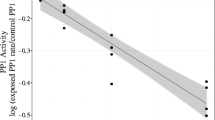Abstract
Introduction
Lead toxicosis occurs in veterinary patients, with few reports involving rabbits, and no previous reports using oral calcium disodium EDTA.
Case report
A 7-year-old male castrated Lionhead rabbit presented to the Cornell University Hospital for Animals (CUHA) for evaluation after a 2-day history of lethargy and a 2-week history of hyporexia. The patient had been observed pulling paint from the walls of the home, a house built circa 1900, in the months prior to presentation. The patient was moderately anemic with a hematocrit of 21% with red blood cell morphological changes consistent with lead toxicosis, including basophilic stippling, nucleated red blood cells, and polychromasia. Radiographic images of the abdomen revealed excessive accumulation of gas in the gastrointestinal tract in a pattern consistent with gastric stasis and numerous small mineral to metallic opacities in the cecum. The blood lead concentration was 792 μg/dL, confirming the diagnosis of lead toxicosis with secondary gastrointestinal stasis. The rabbit was hospitalized for treatment with oral and subcutaneous calcium disodium EDTA for 4 days and then discharged home to the care of the owners.
Discussion
Severe lead toxicosis in a rabbit can be treated successfully with oral and subcutaneous calcium disodium EDTA and aggressive supportive treatment.


Similar content being viewed by others
References
Morgan RV. Lead poisoning in small companion animals: an update (1987-1992). Vet Hum Toxicol. 1994;36:18–22. http://www.ncbi.nlm.nih.gov/pubmed/8154098
Hood S, Kelly J, McBurney S, Burton S. Lead toxicosis in 2 dwarf rabbits. Can Vet J. 1997;38:721–2. http://www.ncbi.nlm.nih.gov/pubmed/9360793
Swartout MS, Gerken DF. Lead-induced toxicosis in two domestic rabbits. J Am Vet Med Assoc. 1987;191:717–9. http://www.ncbi.nlm.nih.gov/pubmed/3119529
Bischoff K, Priest H, Mount-Long A. Animals as sentinels for human lead exposure: a case report. J Med Toxicol. 2010;6:185–9.
Berny PJ, Côté LM, Buck WB. Can household pets be used as reliable monitors of lead exposure to humans? Sci Total Environ. 1995;172:163–73. http://www.ncbi.nlm.nih.gov/pubmed/8525354
Johnston MS. Clinical toxicoses of domestic rabbits. Vet Clin North Am Exot Anim Pract. 2008;11:315–26. http://www.ncbi.nlm.nih.gov/pubmed/18406390
Oglesbee B. The 5-minute veterinary consult: ferret and rabbit. First. Ames: Blackwell Publishing; 2006. p. 394–398.
Hernandez-Divers SJ. Rabbits. In: Carpenter JW, editor. Exotic animal formulary. 3rd ed. St Louis, MO: Elsevier Saunders; 2005. p. 411–46.
Lichtenberger M, Lennox A. Updates and advanced therapies for gastrointestinal stasis in rabbits. Vet Clin North Am Exot Anim Pract. 2010;13:525–41. http://www.ncbi.nlm.nih.gov/pubmed/20682434
Wismer T. Lead. In: Peterson M, Talcott PA, editors. Small animal toxicology. 3rd ed. St Louis: Elsevier Saunders; 2013. p. 204–10.
Plumb DC, editor. Famotidine. Plumb Veterinary Drug Handbook. 6th ed. Ames; 2008. p. 372–4
Ghisleni G, Spagnolo V, Roccabianca P, Scanziani E, Paltrinieri S, Lupo F, et al. Blood lead levels, clinico-pathological findings and erythrocyte metabolism in dogs from different habitats. Vet Hum Toxicol. 2004;46:57–61. http://www.ncbi.nlm.nih.gov/pubmed/15080203
Polizopoulou Z, Roubies N, Karatzias H, Papasteriades AP. Incidence of subclinical lead (Pb) exposure in cattle of an industrial area in Greece. J Trace Elem Electrolytes Health Dis. 1994;8:49–52. http://www.ncbi.nlm.nih.gov/pubmed/7804030
Gwaltney-Brant S. Heavy metals. In: Haschek WM, Rousseaux CG, editors. Handbook of toxicologic pathology. 2nd ed. San Diego: Academic Press; 2002. p. 1327–32.
Author information
Authors and Affiliations
Corresponding author
Ethics declarations
Conflicts of Interest
None
Sources of Funding
None
Rights and permissions
About this article
Cite this article
Walter, K.M., Bischoff, K. & de Matos, R. Severe Lead Toxicosis in a Lionhead Rabbit. J. Med. Toxicol. 13, 91–94 (2017). https://doi.org/10.1007/s13181-016-0597-x
Received:
Revised:
Accepted:
Published:
Issue Date:
DOI: https://doi.org/10.1007/s13181-016-0597-x




